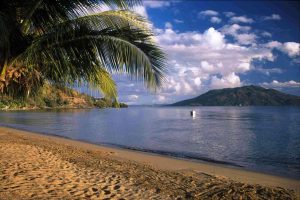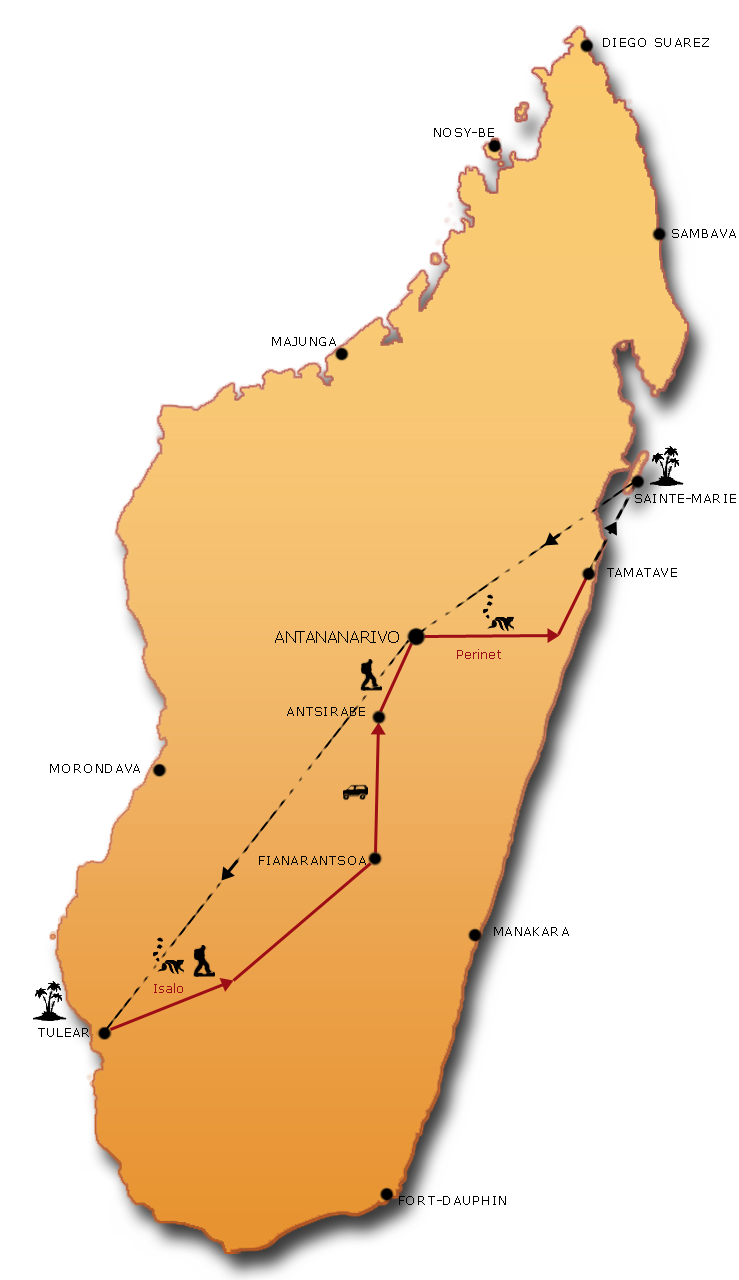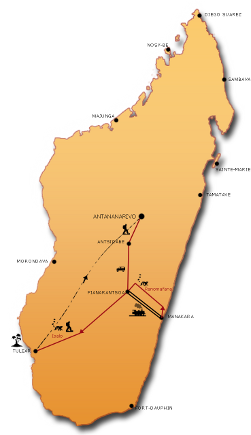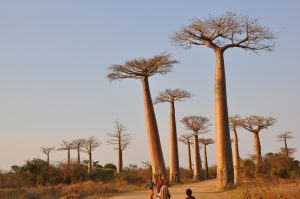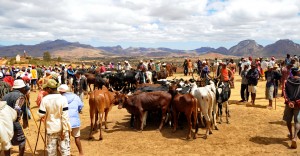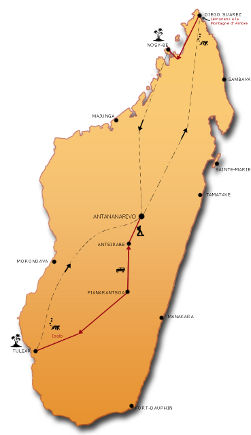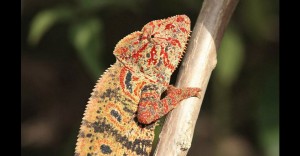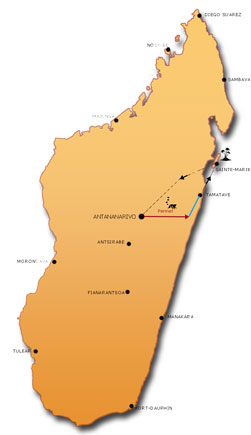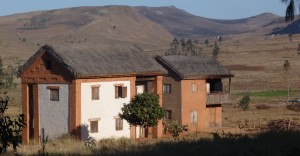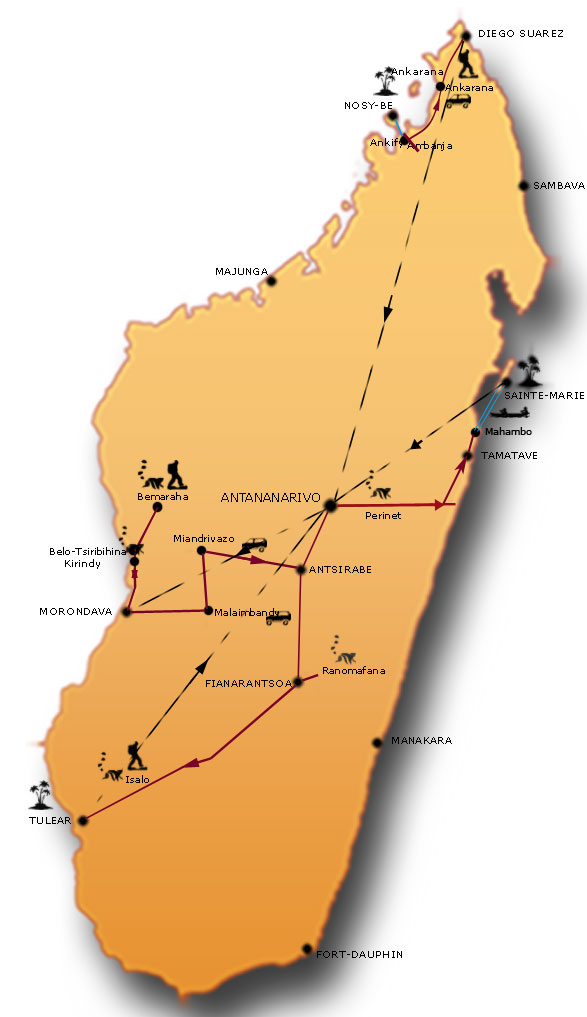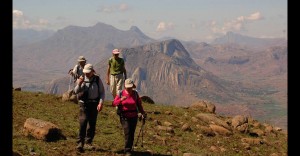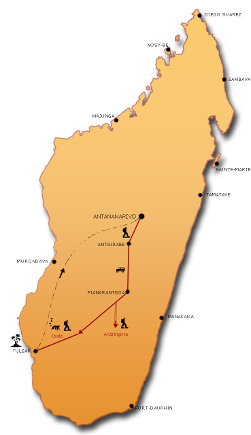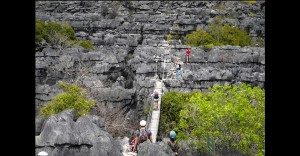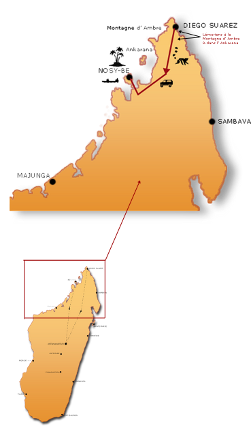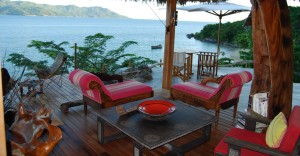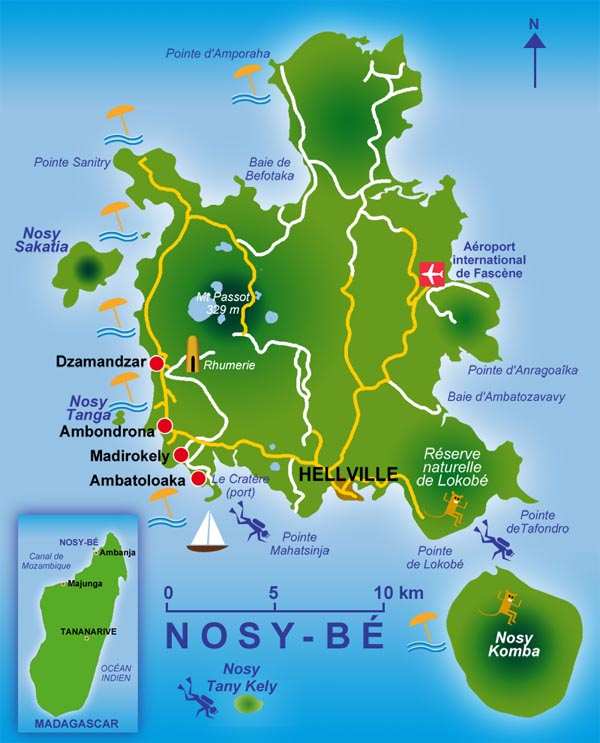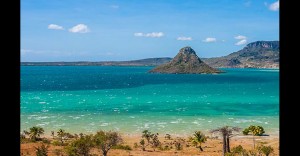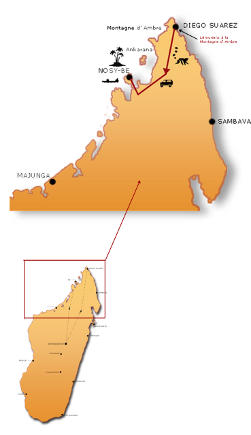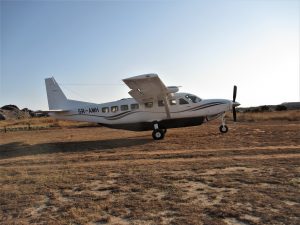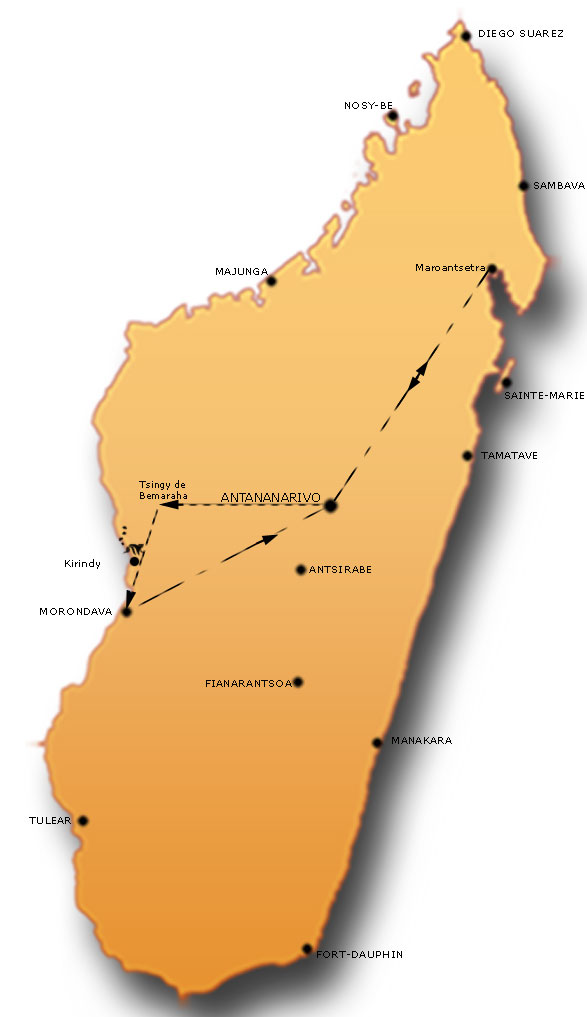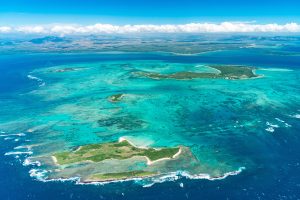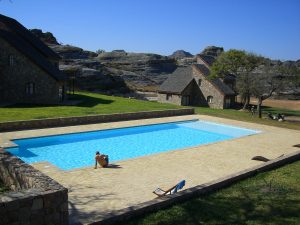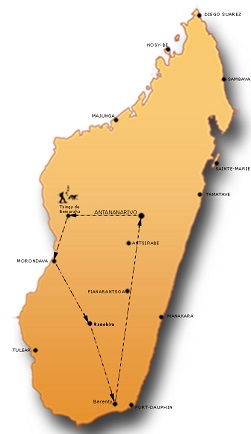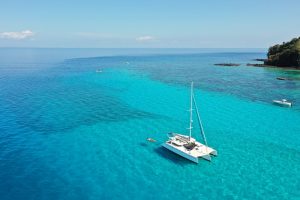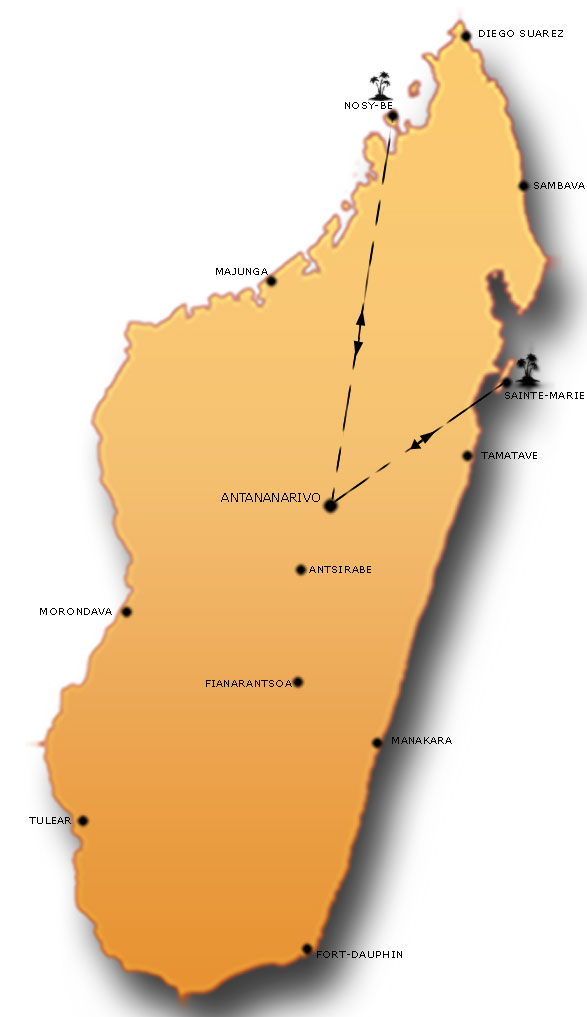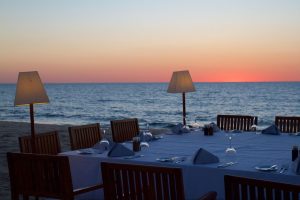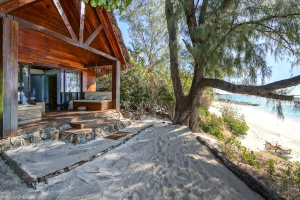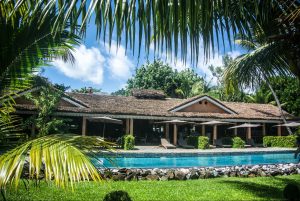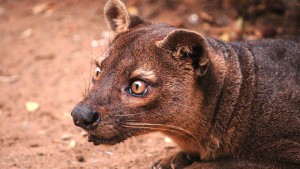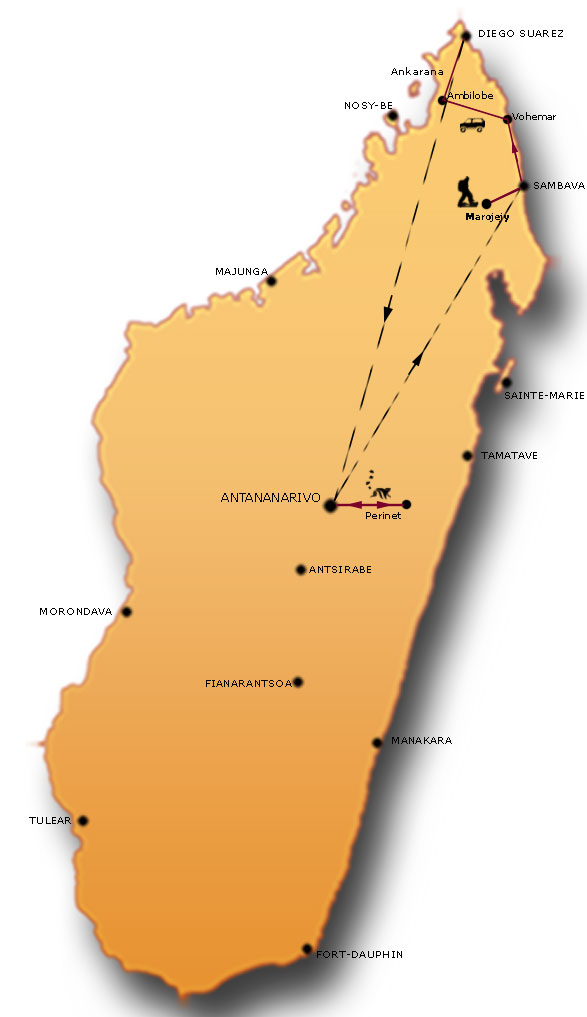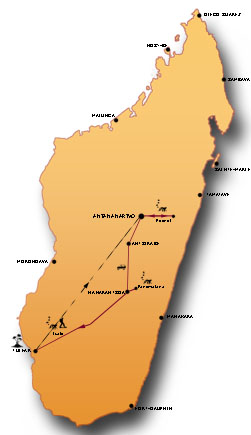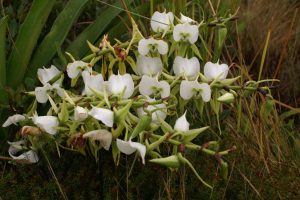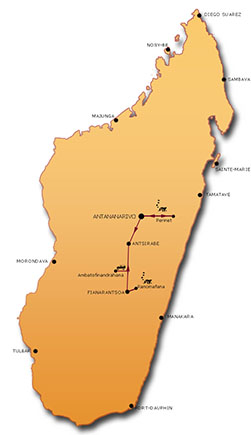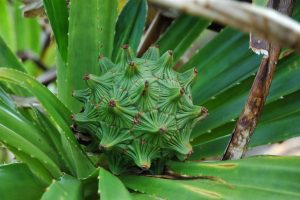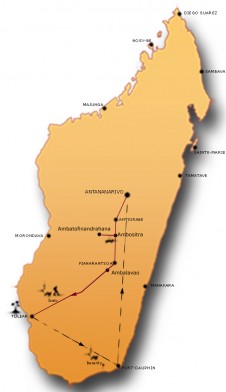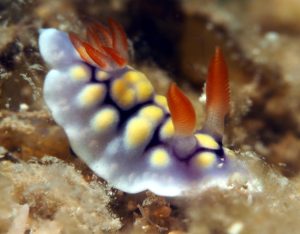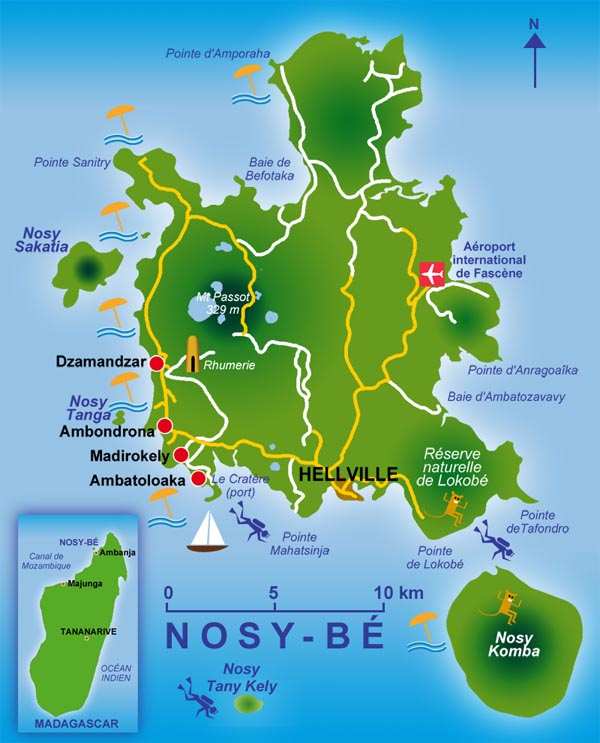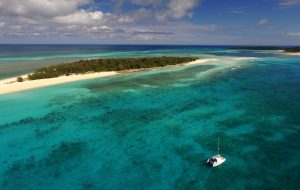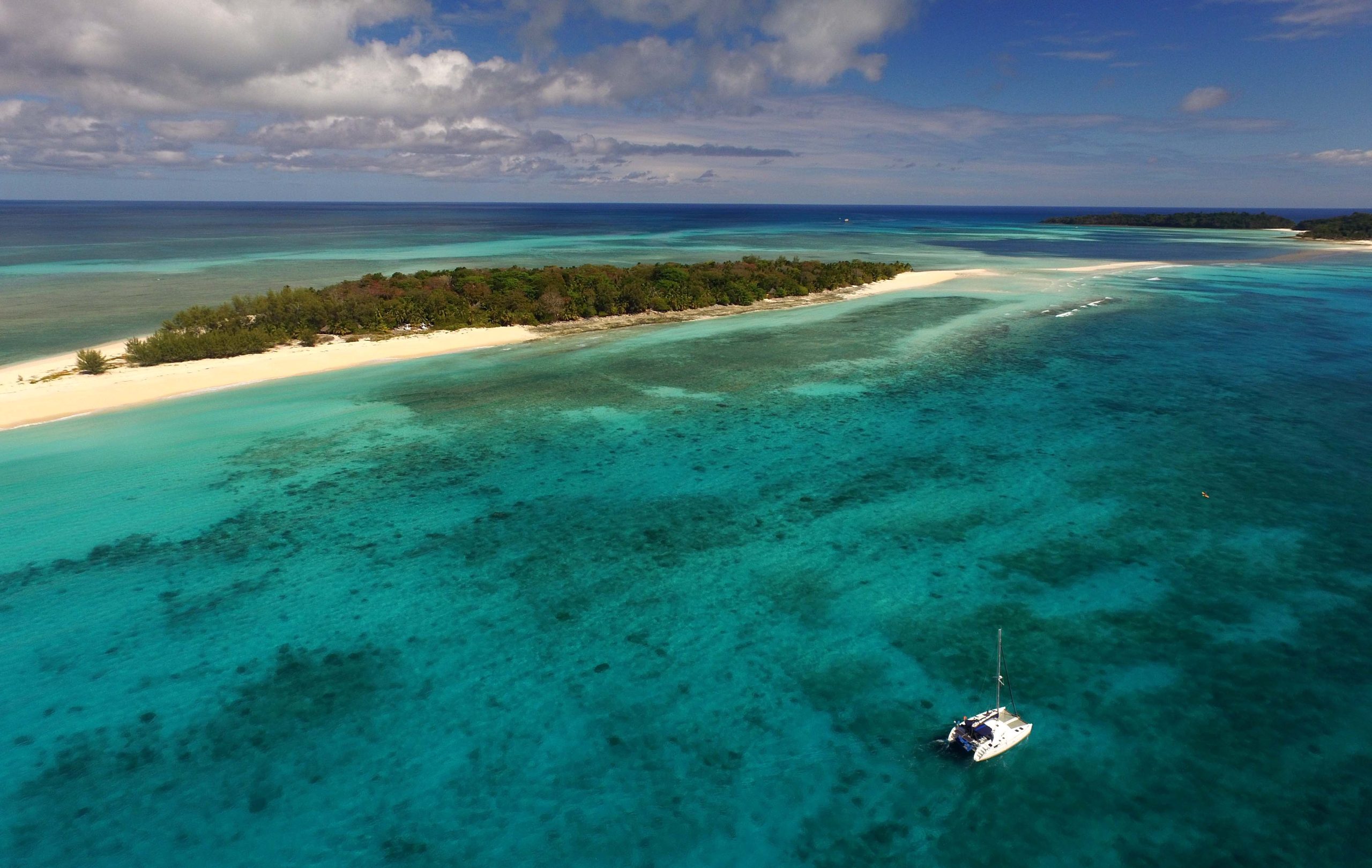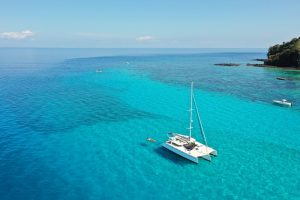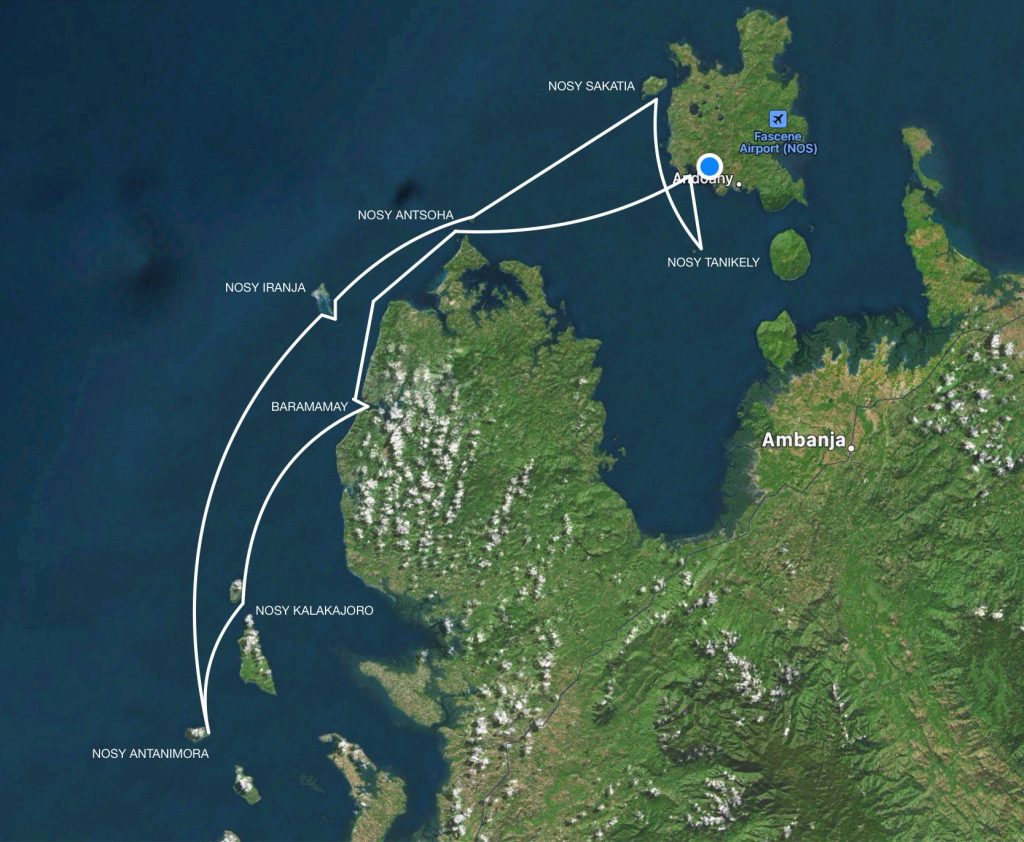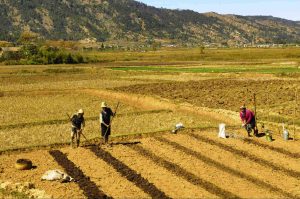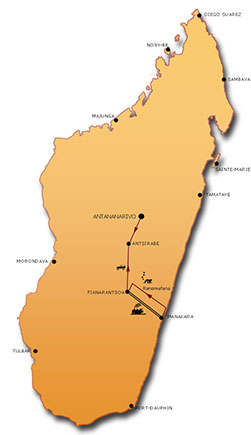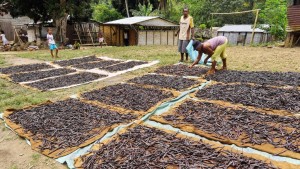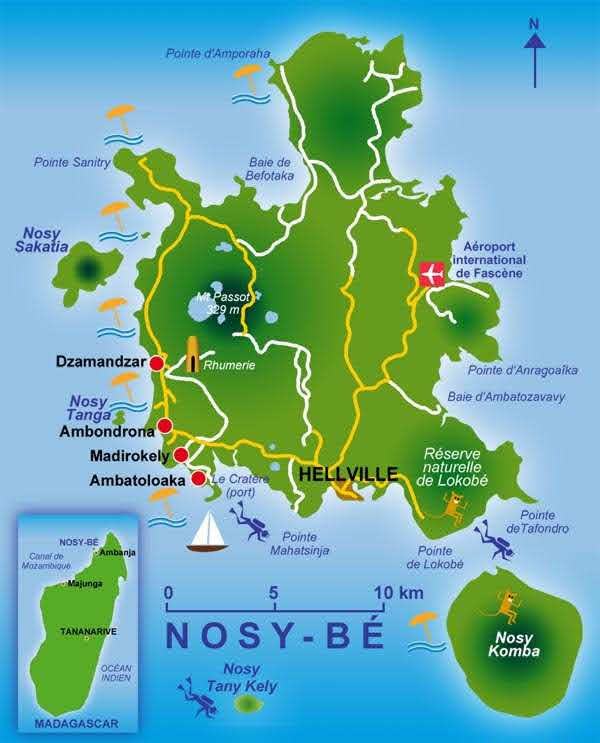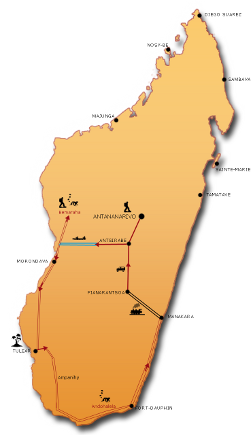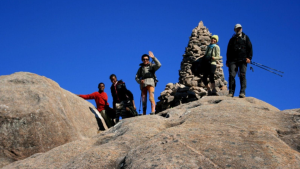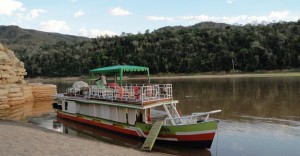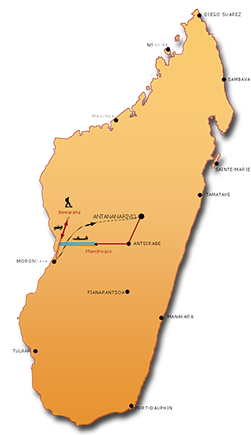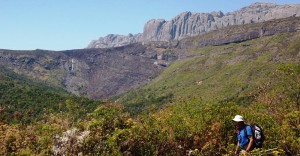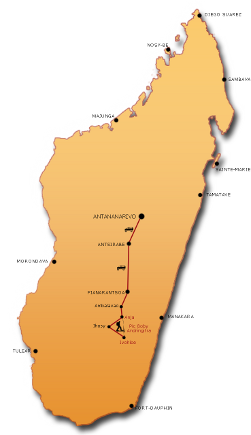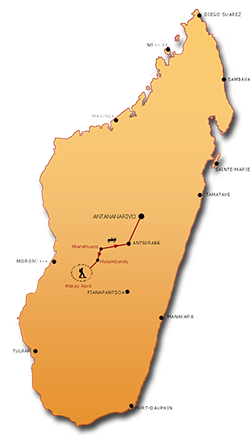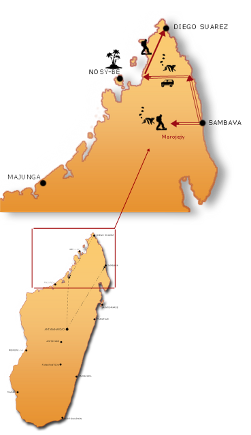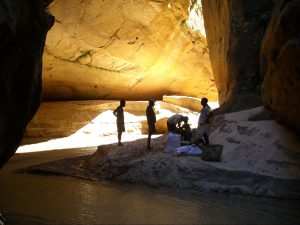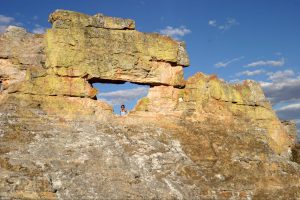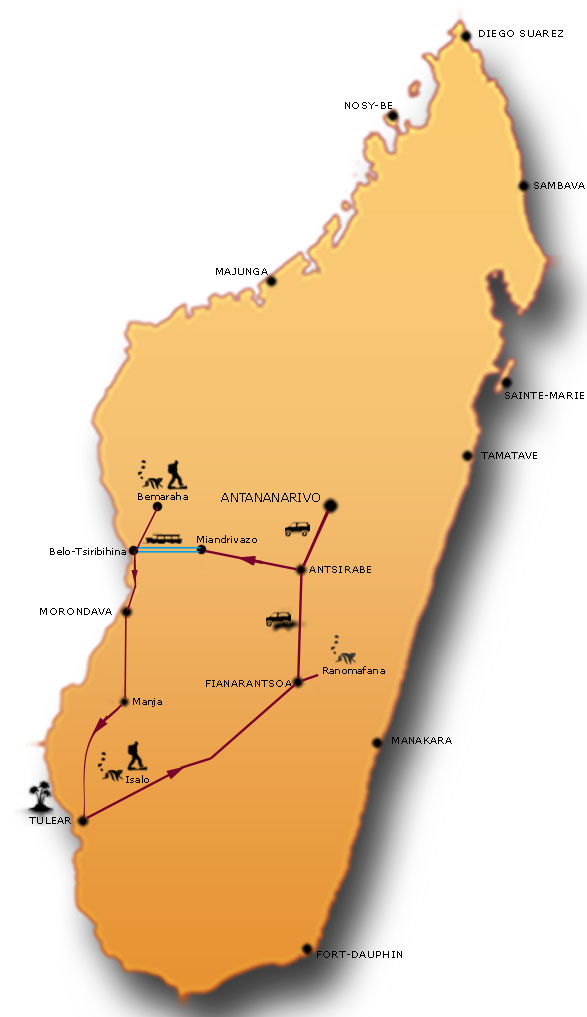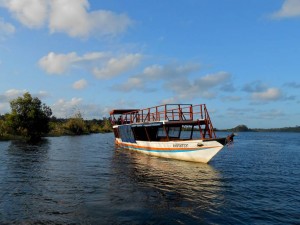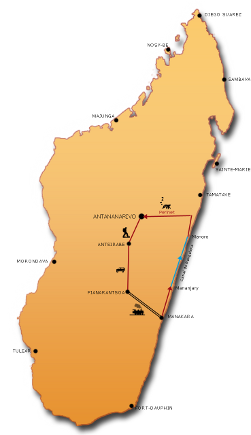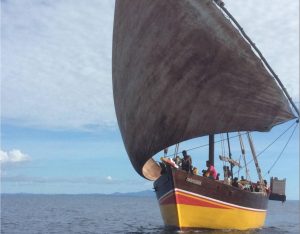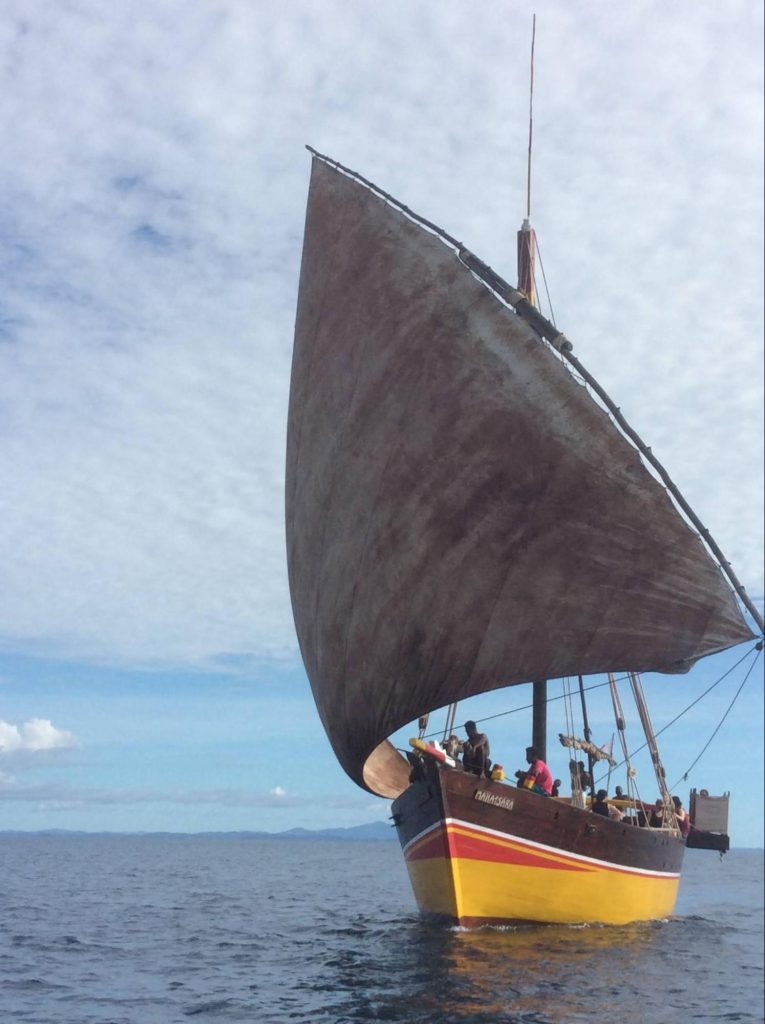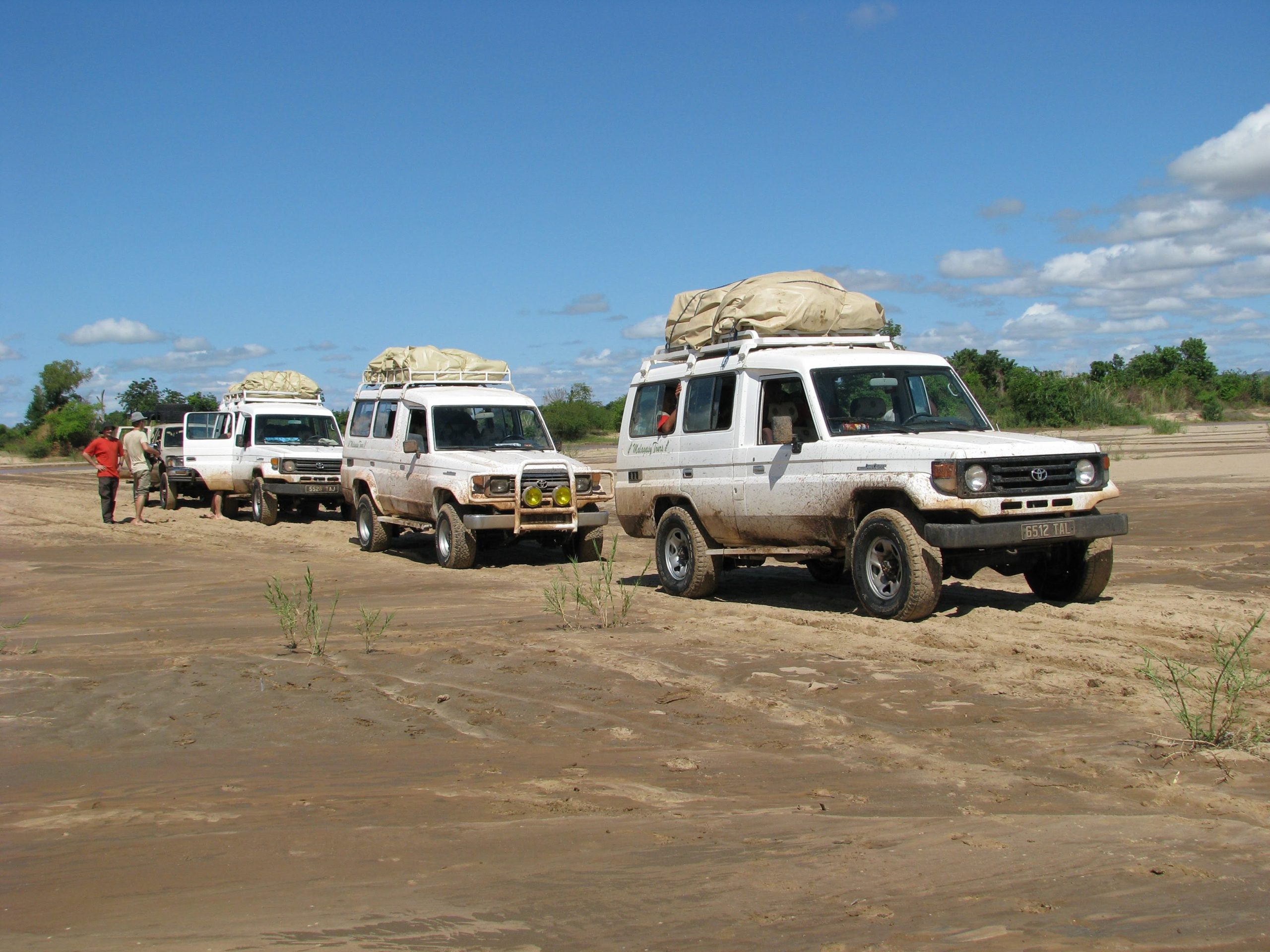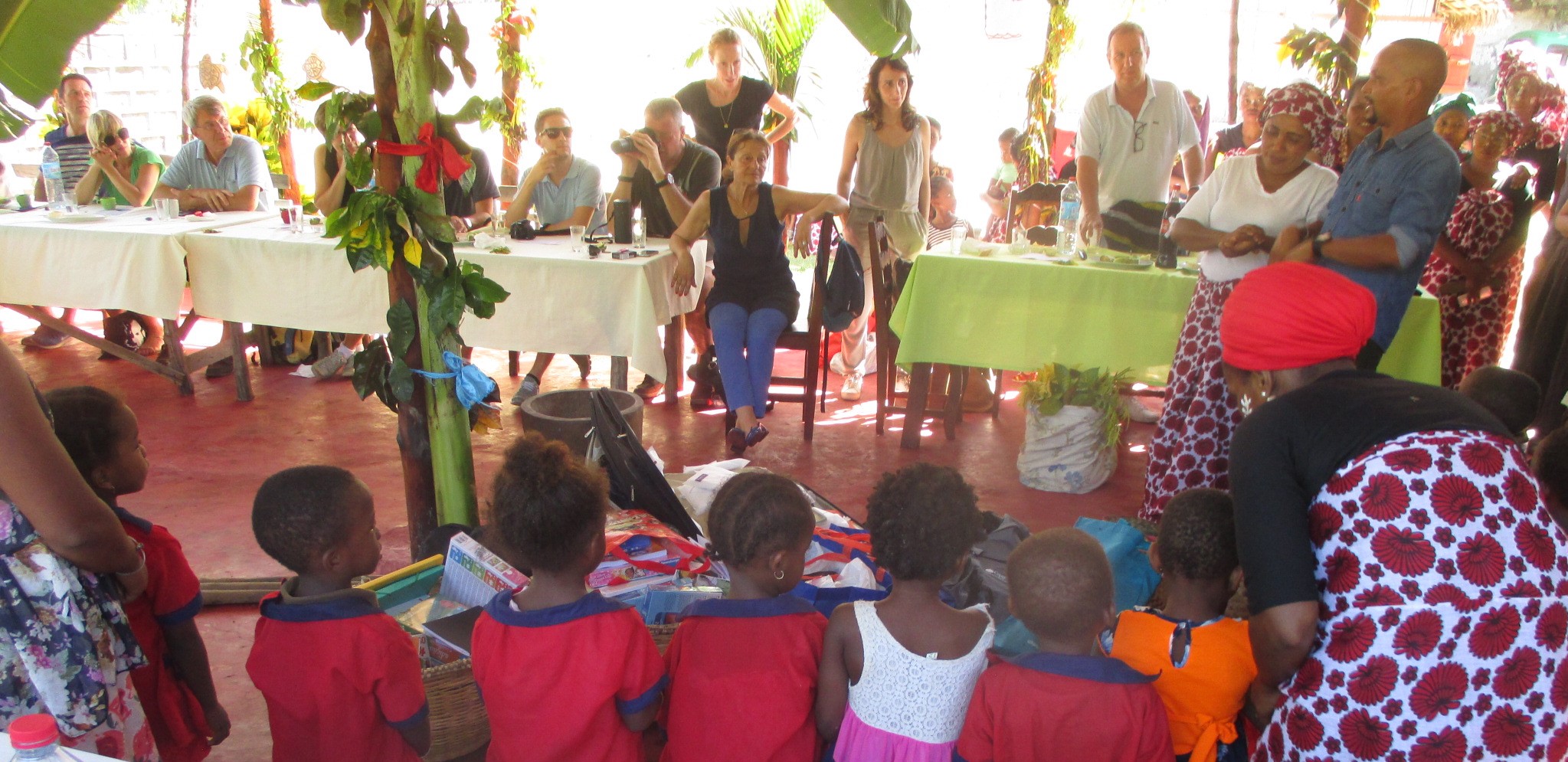
The climate is characterized by two main seasons but has large regional differences.

- The austral winter (June to August): generally cool in the highlands, temperate on the coast and very humid on the north end, the east coast of the island and St. Marie..
- The austral summer (mid-November to April) rainfall is abundant, risk of cyclones from December to March.
- Offseason in May and September, generally dry and temperate climate.
Climate conditions for a trip to Madagascar
The austral summer in Madagascar:
October to March-April: from November to mid-December it will be hot and dry throughout the territory. From mid- December to March, hot and humid with thunderstorms across the country especially in the late afternoon.
Between January and March, hurricane season, Madagascar located in the ITCZ (Inter Tropical Convergence Zone).
Average temperatures during the austral summer:
- 25 à 28°C in the highlands
- 30 à 32°C on the east , north-east and south-east coasts
- 30 à 36°C in the West, North- South and South -West coast can exceed 40 ° C in the shade in the West and Southwest regions.
The austral winter in Madagascar
From June to August: generally cool weather in the highlands (Antananarivo-Antsirabe-Fianarantsoa).
Temperatures during the austral winter:
Often less than 10 °C in the morning (Highlands)
As low as 0 °C in the region of Antsirabe
Up to -7 °C in Andringitra.
The midday temperature easily reaches 18 to 20 °C.
The evenings are quite cool: 12 to 15 °C.
Frequent drizzles and morning fog in the highlands.
In the south, cool weather in the morning, especially on the seafront: 8 to 10 °C.
Hot and dry during the day (24 to 28 °C), rain in the Southeast (Fort Dauphin)
Hot and dry in the Northwest (Nosy Be) from 24 to 28 °C.
May and September:
Intermediate periods where the climate is temperate and dry.
The various climatic zones in Madagascar:
In the North and the northwest
Hot and wet tropical climate.
In the North of the island, the hydrological pond of Sambirano, framed in the North by the massif of the Mountain of Amber and in the South by the massif of Tsaratanana, from Marojejy and the beginning of Ankaratra, all this forming a corridor which allows the passage of trade winds from east to west, and so creating a wetter region favorable to the wet rain forest which extends from Marojejy, in the East, to Nosy Be on the West.
In this region soils receiving abundant rainfalls of the order of 2 000 mm on average a year, these rains fall during the monsoon which lasts from December till April, the extreme temperatures recorded in Diego Suarez oscillate between 15 ° and 37 °C.
On the East coast, from the northeast to the southeast
Hot and very wet tropical climate.
The trade wind of the southeast brings all year masses of hot and wet air.
A steep eastern region, facing the Indian Ocean, exposed to winds and especially cyclones that strike at the rate of 2 times per year between January and March, the precipitation height reached more than 3000 mm per year, bringing large amounts of rain almost all year favouring a wet tropical vegetation, sanctuary of the primary forest.
In September and October are the least rainy two months of the year, this East coast watered by plentiful rains, rainy season from November till March, rainy season from April till July, from January till March rains are mainly nocturnal.
Fort Dauphin: a climatic exception where the closeness of the ocean comes to soften and to moisten this hot and dry southern region, enabling the development of vegetation more tropical.
To the west
Hot and dry tropical climate, gently sloping terrain (savannah) protected of cyclones and winds, where the dry and wet seasons are well marked. This is the favourite ground of the savannah, baobabs and dry deciduous forest.
As we are near the coast or near the mountain, the rainfall averages oscillate between 800 and 2 000 mm a year, the temperatures accusing high differences, going of 10 ° to 37 °C. The west coast is the least rainy coast of the island and the most brightened up.
Rains in the southern part are quasi-absent (less than 300 mm / year), in the North, in the region of Sambirano including the island of Nosy Be, we notice a microclimate with night-rains and a high rate of humidity.
On the highlands
Central region of the island, the height of more than 1000 m, marked by the alternation of a fresh dry season and a wet and hot season.
Rains are of the order of 1 200 mm a year and the average temperatures are 20 °C. Rainy season from October till April, where the weather is moderately hot. Rains are plentiful from the middle of November up to the end of March, falling late in the afternoon, days being generally brightened up.
During the southern winter, from June till August, days are often accompanied with wind and nights are very fresh. The temperatures can fall in 5°C, even lower, being able to border 0°C near Antsirabe, in the south of the capital where the height varies from 1200 to 2640 meters (Ankaratra, Mount Tsiafajavona).
The dry and semi-desert South
Almost totally cut of the wet winds of the Indian Ocean, this region is marked by a dry season that never ends, receiving very little rainfall, less than 120 mm a year and with very high temperature differences. The gaps recorded in Tulear are from 6 ° to 40 °C.
The bordering regions of the Tropic of Capricorn can record extremes of over 45 °C in the shade around October and November.
This type of climate gave birth to a biotope more than amazing, formed by plants totally adapted to a dry and hot climate, so forming shrubby vegetation made of thorny: Didiereaceae, spurges, baobabs, prickly pears, etc.
It is also the poorest region of Madagascar, where the dry season can last over a year.




